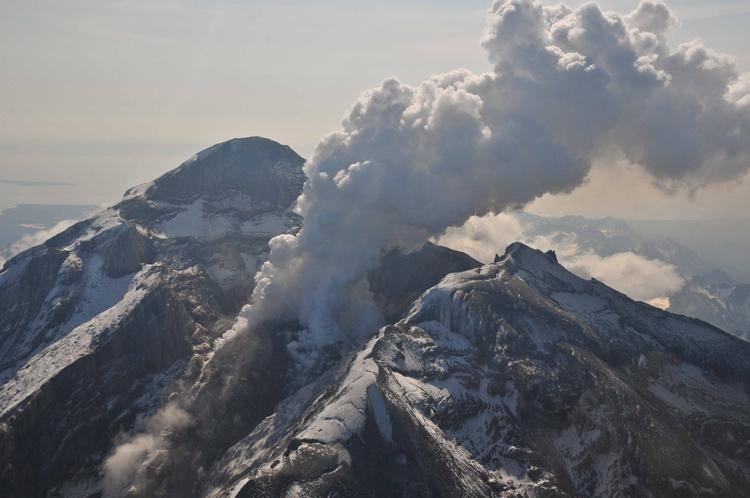Redoubt Volcano’s active lava dome as it appeared on May 8, 2009. The volcano is in the Aleutian Range about 110 miles south-southwest of Anchorage, Alaska. (Credit: Chris Waythomas, Alaska Volcano Observatory)
Many small earthquakes often precede a volcanic eruption, and they can sometimes happen in such rapid succession that they create a harmonic tremor similar to the kind created by musical instruments, though at frequencies lower than humans can hear.
New research on an eruption sequence at Alaska’s Redoubt Volcano in March 2009 showed that a harmonic tremor rose to higher and higher frequency until it paused just before six of the eruptions, with five of those coming in rapid succession.
Scientists at the USGS Alaska Volcano Observatory have dubbed the highest-frequency harmonic tremor at Redoubt Volcano “the screams” because they reach such high pitch, at 30 hertz, compared with a 1-to-5 hertz starting point. In humans, the audible frequency range starts at about 20 hertz.
“The frequency of this tremor is unusually high for a volcano, and it’s not easily explained by many of the accepted theories,” said Alicia Hotovec-Ellis, a University of Washington doctoral student.
Some volcanoes make sound when magma forces its way up through rock, but Hotovec-Ellis believes the harmonic tremors are the result of magma being forced through narrow passages in the rock.
Magma sticks to the rock surface in a narrow passage until the pressure is high enough to force it along a bit, before it sticks again, pressure mounts, and it moves again.
Each of these sudden movements results in a small earthquake, ranging in magnitude from about 0.5 to 1.5, Hotovec-Ellis said.
"Because there’s less time between each earthquake, there’s not enough time to build up enough pressure for a bigger one," she said. "After the frequency glides up to a ridiculously high frequency, it pauses and then it explodes."
Hotovec-Ellis, lead author of the study published in the Journal of Volcanology and Geothermal Research, is also co-author of a second paper in Nature Geoscience that uses a "frictional faulting" model to explain the tremors.
The model addresses the brief pause in the harmonic tremor just before the volcanic explosion. "We think the pause is when even the earthquakes can’t keep up anymore and the two sides of the fault slide smoothly against each other," Hotovec-Ellis said.
Hotovec-Ellis created two recordings of the seismic activity. A 10-second recording covers about 10 minutes of seismic sound and harmonic tremor, sped up 60 times. A one-minute recording condenses about an hour of activity that includes more than 1,600 small earthquakes that preceded the first explosion with harmonic tremor.















